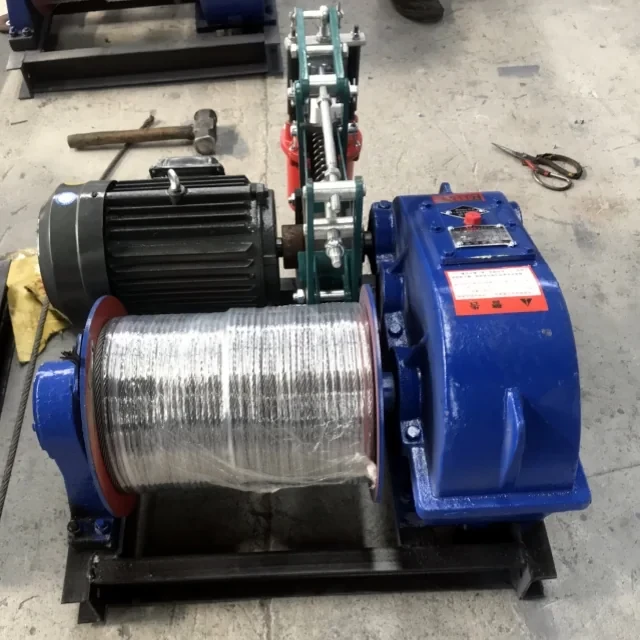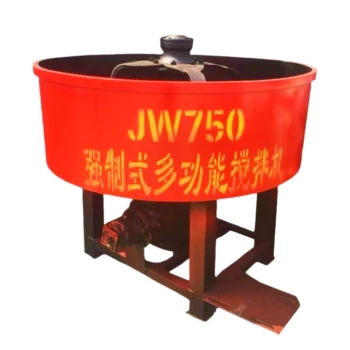Selecting the right quick winch isn’t just about picking the highest traction force—it’s about matching the tool to your specific operational demands. Whether you’re recovering vehicles, loading boats, or handling heavy construction materials, understanding how design, environment, and safety margins impact performance ensures efficiency and longevity. Here’s how to make an informed choice.
Quick Winch Traction Force Fundamentals
How Design and Environment Impact Force Capacity
A winch’s traction force isn’t a fixed number; it’s a product of its design and operating conditions. Key factors include:
- Operating Pressure & Gear Ratio: Hydraulic winches rely on system pressure and gear efficiency to generate pulling power. Higher pressure typically means greater force, but only if the gear ratio supports it.
- Component Integrity: Worn drums, frayed ropes, or misaligned motors reduce effective capacity. Regular inspections are non-negotiable.
- Environmental Factors: Cold temperatures can thicken hydraulic fluids, while saltwater exposure accelerates corrosion—both silently erode performance.
Did you know? A quick winch’s single-rope traction force ranges from 0.5 to 40 tons, but real-world capacity often falls short without proper maintenance.
Real-World Applications and Load Scenarios
Winches are versatile, but misuse leads to premature failure. Consider these matchups:
- Vehicle Recovery: A 2–3-ton winch suffices for ATVs, but a 10-ton+ model is safer for trucks in muddy terrain.
- Marine Loading: Saltwater demands stainless-steel components and synthetic ropes to resist corrosion.
- Construction: Frequent heavy lifts (e.g., steel beams) require winches with reinforced drums and OSHA-compliant safety margins.
Pro Tip: Always cross-check the manufacturer’s load chart against your typical tasks. Overestimating needs wastes money; underestimating risks accidents.
Ensuring Operational Safety and Efficiency
Calculating Required Force for Your Project
Avoid guesswork with this formula:
- Estimate Peak Load: Add 20% to the heaviest object you’ll pull (e.g., a 5-ton truck + 1-ton buffer = 6-ton requirement).
- Factor in Friction: Mud or steep inclines can double effective load. Use a dynamometer for real-world testing.
- Check Rope Compatibility: Wire ropes handle sharp edges better, while synthetics are lighter and safer for overhead lifts.
Ever wondered why winches fail mid-pull? It’s often due to unaccounted friction or degraded ropes—issues a 10-minute pre-op check could prevent.
Maintenance Practices to Sustain Traction Performance
Safety starts with upkeep:
- Monthly Inspections: Look for rope fraying, hydraulic leaks, or loose bolts.
- Lubrication Schedule: Grease drum bearings and motor parts per the Garlway manual to prevent seizure.
- Storage: Keep winches dry and covered when idle to extend component life.
Visual Metaphor: Treat your winch like a parachute—its reliability matters most when you’re already in freefall.
Conclusion: Smart Selection Saves Time and Lives
Choosing a quick winch isn’t about brute strength; it’s about precision. By aligning traction force with real-world needs, factoring in environmental stressors, and adhering to strict maintenance, you turn a simple tool into a lifeline. For projects demanding reliability, Garlway winches offer tested designs that balance power and durability—because the right equipment shouldn’t just move loads; it should move your business forward.
Actionable Takeaway: Before purchasing, simulate your toughest job scenario. If the winch struggles during testing, it’s not the right fit—no matter what the specs claim.
Related Products
- Ready Mixer Machine for Construction Ready Mix Machinery
- Small Electric Winch 120V and 240V for Compact Applications
- JZC400 Mobile Small Concrete Mixer Cement Mixer Machine
- Portable Electric Small Cement Mixer Concrete Machine
- Portable Small Trailer Winch
Related Articles
- How to Maintain Hydraulic Systems in Concrete Mixers: A Safety-Focused Guide
- How to Classify and Resolve Concrete Mixer Hazards with Compliance
- How to Choose Concrete Mixers for Long-Term Reliability and Cost Savings
- How to Conduct OSHA-Compliant Concrete Mixer Inspections: A Safety-First Checklist
- How to Build an OSHA-Compliant Safety System for Concrete Mixer Workspaces




















